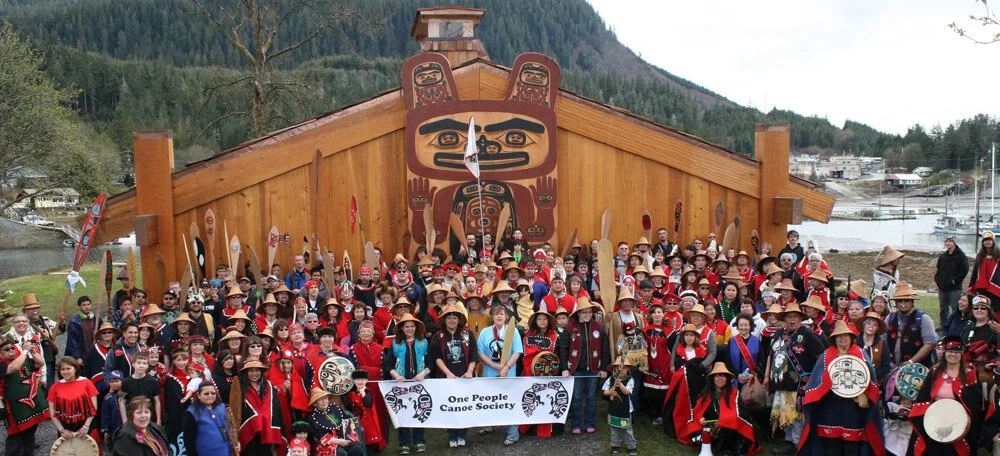
Ḵaachx̱an.áak’w (Wrangell)
Photo provided courtesy of the Alaska State Library.
For thousands of years, the inhabitants of Wrangell were the Stikine Tlingit who had migrated from the Canadian interior down through Southeast Alaska’s Stikine River, traveling beneath the glaciers to escape the great floods during the last Ice Age. Shtax’héen Ḵwáan translates to the “People of the Bitter, Unwholesome Water” and refers to the silt-filled waters of the Stikine River.
Chief Shakes Tribal House was constructed in the early 19th century by the Stikine Tlingit and is considered a historic site in Wrangell, a dominant factor for inclusion in ANCSA. Restored twice, once in 1940 and again in 2013, the tribal house stands on Shakes Island and serves as a reminder of the history and power of the Shakes lineage.
Photo courtesy of Wrangell Sentinel
From its earliest settlement period dating as far back as 8,000 years, the Stikine Tlingit took advantage of Wrangell’s unique location and utilized its trading networks, establishing routes from Southeast Alaska extending into the interior of Canada and up the Copper River. The 10 Stikine River clans lived in separate areas surrounding what is now the modern day harbor, where petroglyphs, burial sites and totem poles have been found from the early 19th century, indicating Native occupancy.
One of the most known and distinguished families from Wrangell was the Shakes. Chief Shakes V (Kaawishté) was the longest-tenured leader of the Naanyaa.aayí (Eagle/Killerwhale Clan) and ruled on Wrangell Island until his death in 1878. Under his leadership, he moved the Tlingit village from Kaasitl Aan (Old Town), to the area near Mill Creek on the mainland, and later to Wrangell Island. The restored Chief Shakes Tribal House sits on Shakes Island in the middle of Reliance Harbor and is an exact, scaled-down copy of the house in which Chief Shakes VI lay in state in 1916.
The Stikine Tlingit at Fort Wrangell in the early 1900s. Photo courtesy of the Alaska State Library.
While the Russian, British and American flags have tried to stake their claims in Wrangell over the centuries, the original Native inhabitants have evolved with the town and continuously worked to maintain their land and civil rights. The Alaska Native Brotherhood and Sisterhood was established in 1912 and worked alongside William Paul Sr. in 1922 to win a landmark case to allow Alaska Natives the right to vote. Currently, the Wrangell Cooperative Association maintains the role as the federally recognized tribe, providing their tribal citizens with safe and reliable access to health, education, recreation, economic support and opportunity to grow within their culture.

“When our land is taken from us, our at.óowu goes with it ― the spiritual and physical connection we have to our environment, which makes up a large part of our Indigenous identity. This connection has been foregone since 1867 and compounded in 1971, when our community and four others were not included in the largest land claims settlement of the time. We are not asking for all of the Tongass to be returned to us. All that we ask is that we are allowed the opportunity to connect with our homelands the same way others have, through the Alaska Native Claims Settlement Act. To not acknowledge Wrangell only showcases the blatant disregard for our people and upholds the colonial decision to exclude certain areas of the Tongass because of their greater value to the federal government and outside special interests.”




